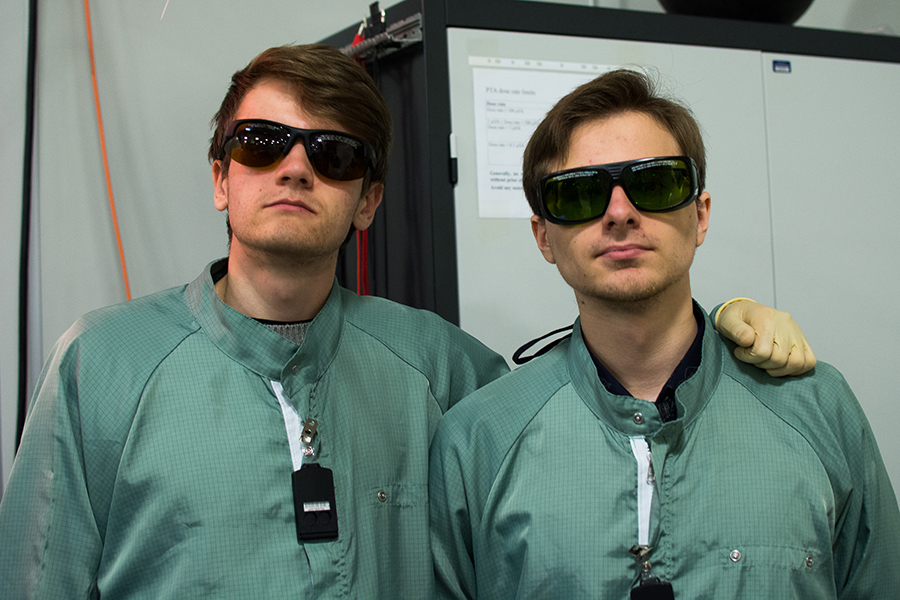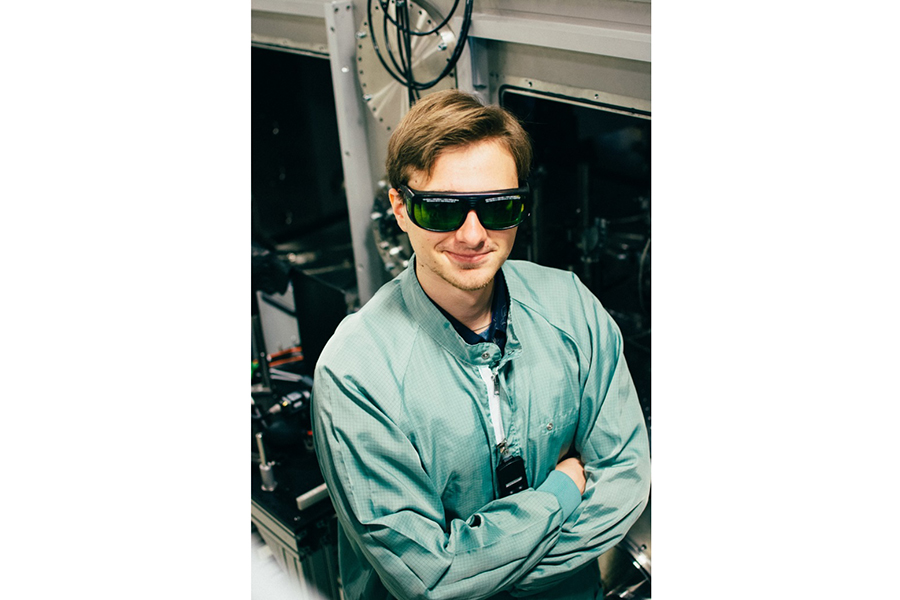The students of the Institute of Laser and Plasma Technologies at MEPhI have undergone an internship at the laser facility PHELIX in GSI Helmholtz Centre for Heavy Ion Research, Germany. It is a major research center, conducting fundamental and applied research in plasma physics, atomic physics and related natural science disciplines, as well as in biophysics and medical research.

Optical scheme of the experiment on generation magnetic fields at the PHELIX installation
This fall an experiment on the optical generation of magnetic fields in cylindrical targets was conducted at the PHELIX installation in Darmstadt, Germany. It was attended by two graduate students of the LAPLAS Institute Yu. Kochetkov and V. Stepanishchev (Department № 37). Theoretical support of the experiment and general guidance was provided by Associate Professor of Department № 32 of the LAPLAS Institute F.A. Korneev.

V. Stepanishchev and Yu. Kochetkov – students of the Department №37 of MEPhI
The students worked as part of an international team that included scientists from Germany, France, and Japan. The experiment lasted almost a month. As a result scientists confirmed the main conclusions of the theoretical calculations, obtained a large amount of data, which after processing will restore the numerical values of the magnetic field, the parameters of its temporal evolution and geometric properties. A new method of optical generation of superstrong magnetic fields in the plasma opens up opportunities in the studies of astrophysical processes in the terrestrial laboratory conditions and can find application in various high-tech applications.

Members of the international team of researchers in a control room
"In my case a common cliche "unique experience" corresponds to reality - the experience was really unique,” V. Stepanishchev comments the trip. “There were so many new and interesting things! I had to remember obtained in MEPhI knowledge and applied them in practice. All the details were discussed in English, and sometimes these discussions led to surprising discoveries not only in physics but also in linguistics. Besides, two weeks is a sufficient period of time in order to understand how the country lives and works. In this regard Germany, of course, impressed me. We lived in a comfortable guest house, five minutes from the experimental setup, were cooking breakfast and dinner together. We worked almost all the time for 12 hours, and sometimes longer –we came in the lab at 8 in the morning. As it often happens in experiments, regularly there were difficulties that needed to be solved quickly.”

V. Stepanishchev assembles the optical scheme
Yuri Kochetkov: "I learned about the possibility to do an internship in GSI from a Professor of Theoretical Nuclear Physics F.A. Korneev, who was the PI (principal investigator) of this experiment. The meaning of the clause was to increase the level of students of the LAPLAS Institute and development of international cooperation. They needed students with a good knowledge of lasers in general, methods of plasma diagnostics and good English language in order to take on one of diagnostics. Our involvement in the experiment started before the trip – about a month we had been engaged in the preparation of the experiment, including the design and calculations of the optical system. All this time we had regular teleconferences with foreign scientists.
The idea of experiment, I participated in, was as follows: interaction of powerful laser radiation with a curved target results in the formation of plasma, where, according to theoretical results, a powerful quasi-stationary magnetic field is “frozen”. Scientists used several kinds of diagnostics to study this field, which includes the check of deviations of the proton beam in fields with the use of radiochromic films, x-ray polarimetry diagnostic and interferometry. During the experiment, we did not have strict separation, each member did what was needed at that moment. So I took an active part in all stages and areas of research. Although most of our results require careful handling, we can already say about the success of the study.

Yu. Kochetkov next to the vacuum chamber
Work in an international group, consisting of Russian, French, Japanese, and German high level physicists allowed me to acquire great experience and a great foundation for future scientific work, including facilities in the international level."





